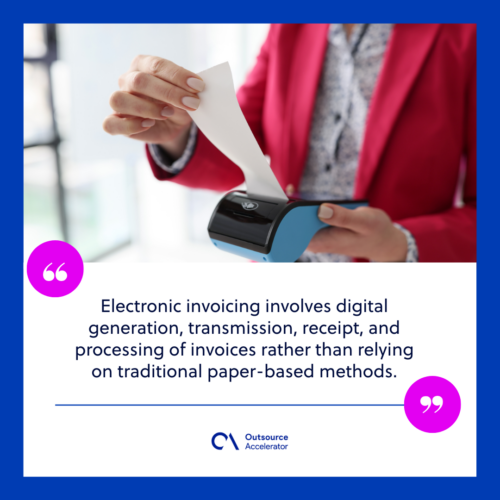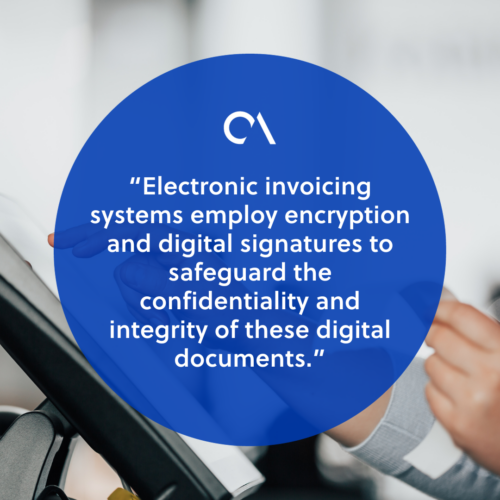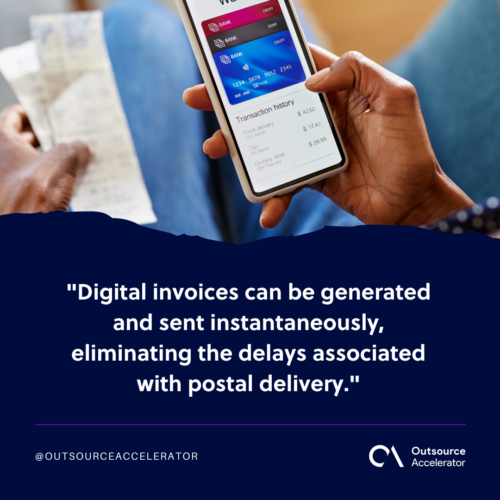Everything you need to know about electronic invoicing

The exchange of invoices is a daily occurrence between buyers and sellers.
However, laborious and error-prone manual methods have burdened this business interaction with payment and purchase records.
Today, there is a rise of a transformative solution called electronic invoicing. This has revolutionized the way organizations handle their financial transactions. It empowers suppliers to generate and dispatch customer invoices in a structured digital format.
This article discusses electronic invoicing, covering everything from its definition to how it works and benefits businesses.
Defining electronic invoicing
Electronic invoicing or e-invoicing, represents a modern approach to invoicing. It is a transformative method that leverages cutting-edge technology to streamline and digitize what was once a time-consuming process.
Electronic invoicing involves digital generation, transmission, receipt, and processing of invoices rather than relying on traditional paper-based methods.
Moreover, eliminating physical paperwork and manual data entry enhances efficiency and reduces the risk of errors.

Electronic invoicing vs. Traditional invoicing
Before delving into the benefits and intricacies of electronic invoicing, it’s important to understand how it differs from traditional invoicing.
Traditional invoicing
Traditional invoicing involves the physical creation and mailing of paper invoices. These invoices are typically generated using the following methods:
- Utilizing word processing software
- Printing from accounting software
- Signed by hand copy and sent via postal mail
Once received, the recipient manually enters the invoice details into their accounting system for processing and payment.
Electronic invoicing
In contrast, electronic invoicing eliminates the need for physical paper invoices. Instead, invoices are generated digitally and transmitted electronically to the recipient.
E-invoicing can be sent through various electronic channels, including email, electronic data interchange (EDI), or specialized e-invoicing platforms.
Electronic invoices are typically in structured data formats, making them easily integrated into automated systems for processing and payment.
How electronic invoicing works
Electronic invoicing operates through a meticulously orchestrated digital ecosystem, revolutionizing how businesses manage financial transactions.
Here’s a closer look at how this sophisticated system functions:
Producing digital invoice data
The process of electronic invoicing begins with the creation of digital invoice data. Instead of manually drafting paper invoices, businesses use dedicated e-invoicing platforms to generate these digital documents.
This step involves inputting all pertinent details, such as invoice numbers, dates, itemized charges, and payment terms, into a digital format.
Encoding invoice data into a structured format
The generated invoice data is encoded into a structured format to ensure seamless integration and automation.
Common formats used in electronic invoicing include:
- eXtensible Markup Language (XML)
- Universal Business Language (UBL)
These structured formats facilitate easy extraction and interpretation by the sender and recipient’s systems, enabling smooth processing.
Securing the transmission of the invoice data
Electronic invoicing systems employ encryption and digital signatures to safeguard the confidentiality and integrity of these digital documents.
These security measures ensure that the invoice data remains protected as it travels from the sender to the recipient.

Generating receipt and validation of the electronic invoice
The recipient’s system generates a receipt confirmation upon receiving the electronic invoice. This confirmation serves a dual purpose – verifying the successful receipt of the invoice and initiating the validation process.
Electronic invoicing validation encompasses several checkpoints, including the following:
- Verifying the sender’s identity
- Confirming data accuracy
- Ensuring compliance with legal and regulatory standards
Integrating with ERP systems for processing
Once validated, the electronic invoice data seamlessly integrates into the recipient’s enterprise resource planning (ERP) or accounting system.
This integration streamlines the accounts payable process by automatically updating records and triggering predefined workflows for payment approval and processing.
Tracking payment initiation
Electronic invoicing systems often include features that allow both the sender and recipient to monitor the status of the invoice throughout its lifecycle.
Real-time visibility into payment initiation is a valuable aspect of e-invoicing. It enables businesses to track payments from when the invoice is sent to its final settlement.
Benefits of electronic invoicing
Adopting electronic invoicing offers numerous advantages to businesses of all sizes and industries.
Let’s explore some of the key benefits:
Cost savings
Electronic invoicing can significantly reduce the costs associated with traditional paper-based invoicing. These savings stem from eliminating paper, postage, printing, and manual data entry.
Additionally, businesses can save on storage space and reduce the risk of late payment fees through faster invoice delivery and processing.
Time efficiency
One of the most notable advantages of electronic invoicing is its time savings. Digital invoices can be generated and sent instantaneously, eliminating the delays associated with postal delivery.
Automated data entry and processing associated with electronic invoicing significantly reduces the time spent on invoice management, allowing employees to focus on more important tasks.

Accuracy and reduced errors
Electronic invoicing minimizes the risk of errors and discrepancies that often occur with manual data entry.
With structured digital invoices, there is less room for human error in copying and transcribing data. This leads to more accurate invoices and reduces the likelihood of disputes or payment delays.
Enhanced security
Electronic invoicing provides improved security for sensitive financial data. Digital invoices can be encrypted and securely transmitted. This reduces the risk of interception or tampering during transit.
Eco-friendliness
The environmental benefits of electronic invoicing contribute to lower deforestation rates and reduced carbon emissions associated with paper production and transportation.
Digitized invoicing aligns with sustainability goals and helps reduce a company’s ecological footprint.
Archiving electronic invoices for record-keeping
For additional data security assurance, electronic invoices are archived digitally for record-keeping and compliance purposes.
The digital archive is a secure repository, facilitating easy retrieval of past invoices for audits, tax compliance, and historical reference.
As the digital landscape continues to evolve, embracing electronic invoicing is a strategic move toward greater efficiency and competitiveness in today’s business environment.







 Independent
Independent




